When it comes to choosing the best cameras for low light photography, there are really two things to consider: image quality and AF performance.
Photography is all about capturing light, so it only makes sense that the toughest challenge for any photographer will be capturing images in low-light conditions. As digital camera technology has improved over the years, cameras are able to capture usable images at higher ISO settings, but ‘usable’ can still mean quite a bit of noise.
It’s rare to find a camera that can both focus reliably at low light levels, yet also produce clean images that resolve fine details. Some, like the Nikon D850, can achieve both admirably. Most tend to excel at one or the other.
As well as the best cameras for low light photography, we will also be looking at the best cameras for low light video in this round-up. These might sound very similar, but there are a few subtle differences you should be aware of when shopping.
What sensor size for low light?
Generally, the bigger the image sensor, the better it will perform in low light. So a camera with a full-frame sensor is probably your best bet. The sensor design also plays a part. Backside illuminated sensors, for example, keep more of the circuitry out of the way so more light can reach the sensor’s photo sites.
But as a general rule, if the pixel count is the same between a full-frame sensor and an APS-C or Micro Four Thirds sensor, the pixels in the bigger full-frame sensor will capture more light and perform better in low light conditions. For more on sensor size and what it means for low light performance, check out our guides to APS-C vs full-frame and Understanding camera sensor size.
Likewise, if two cameras both have the same size sensor, the camera with the lower resolution sensor will perform better in low light. For example, the Canon EOS R5 and EOS R6 both have full-frame sensors, but the R6 is better than the R5 for noise control in low light, owing to its lower resolution.
It’s also worth noting that with mirrorless cameras, better noise control in low light can help the autofocus perform better as the AF system uses the imaging sensor.
How pixel size affects low light performance
The more pixels you place on a sensor, the smaller those pixels will be. Assuming then that two sensors are the same size, the sensor with more megapixels will have smaller pixels. The size of each pixel on your camera’s sensor is measured as a Micron, which is represented as μm.
Pixel sizes range from 1.1 microns in the smallest smartphone sensor to up to more than 8 microns in some full-frame sensors. Using our previous example, the Canon EOS R5’s pixels measure 4.39 μm while the EOS R6’s pixels are a larger 6.56 μm.
Best cameras for low light photography
The options on our list of the best cameras for low light photography were chosen based on our experience testing them. You might also find our guide to the best cameras for image quality useful. For a deeper dive into the many different camera types and features available, check out our range of camera buying guides.
Nikon D850
Specification
- Camera type: Full-frame (FX) DSLR
- Announced: 24th August 2017
- Lens mount: Nikon F
- Sensor: 45.7Mp full-frame (35.9 x 23.9mm) backside-illuminated CMOS
- Maximum continuous shooting rate: 7fps as standard, 9fps with the optional MB-D18 Multi-Power Battery Pack for up to 51 14-bit lossless compressed raw files or 170 12-bit lossless compressed raw files
- Autofocus system: Viewfinder: Multi-CAM 20K autofocus sensor 153 focus points (including 99 cross-type sensors and 15 sensors that support f/8), of which 55 (35 cross-type sensors and 9 f/8 sensors) are available for selection, Live view: Contrast detection
- Viewfinder: Optical pentaprism type
- Screen: Tilting, touch-sensitive 3.2-inch TFT LCD with 2,359,000 dots
- Dimensions: 146×124×78.5mm / 5.8×4.9×3.1inches
- Weight: 1,005g / 2lb 3.5oz with battery and XQD memory card but without body cap, 915g /2lb 0.3oz camera body only
Inside the D850 is a full-frame (35.9 x 23.9mm) sensor with 45.7 million effective pixels. As the sensor is backlit and the micro lenses are gapless the photoreceptors (aka pixels) have the maximum opportunity to gather light. This and the Expeed 5 processing engine has enabled Nikon to give the camera a standard sensitivity range of ISO 64-25,600. There are also expansion settings that extend the range to the equivalent of ISO 32-102,400.
Another feature that will have the ears of Nikon lovers pricking up is the inclusion of the same autofocus (AF) system as is in Nikon’s flagship camera, the D5. This has 153 points with the centre point being sensitive down to -4EV and the rest being sensitive down to -3EV. A total of 99 of the points are cross-type. It means that the D850 should be suitable for shooting sport and action in low light conditions.
Like the D5 the D850 has a 180,000-pixel RGB sensor to inform the metering, white balance, autofocusing and scene recognition system. This functions down to -3EV – useful for low light photography.
As it has the D5’s autofocus (AF) system it’s not really a surprise to find that when you’re shooting using the viewfinder the D850 can focus quickly even in low light conditions. It’s very effective.
Images taken at the uppermost native sensitivity setting (ISO 25,600) look good but there’s inevitably some loss of detail. The images taken in the upper expanded range also look pretty decent.
In sum, the Nikon D850 is a well-built camera with a high-level specification that delivers first-rate images in tricky situations.
£3500
$3296.95Canon EOS R6
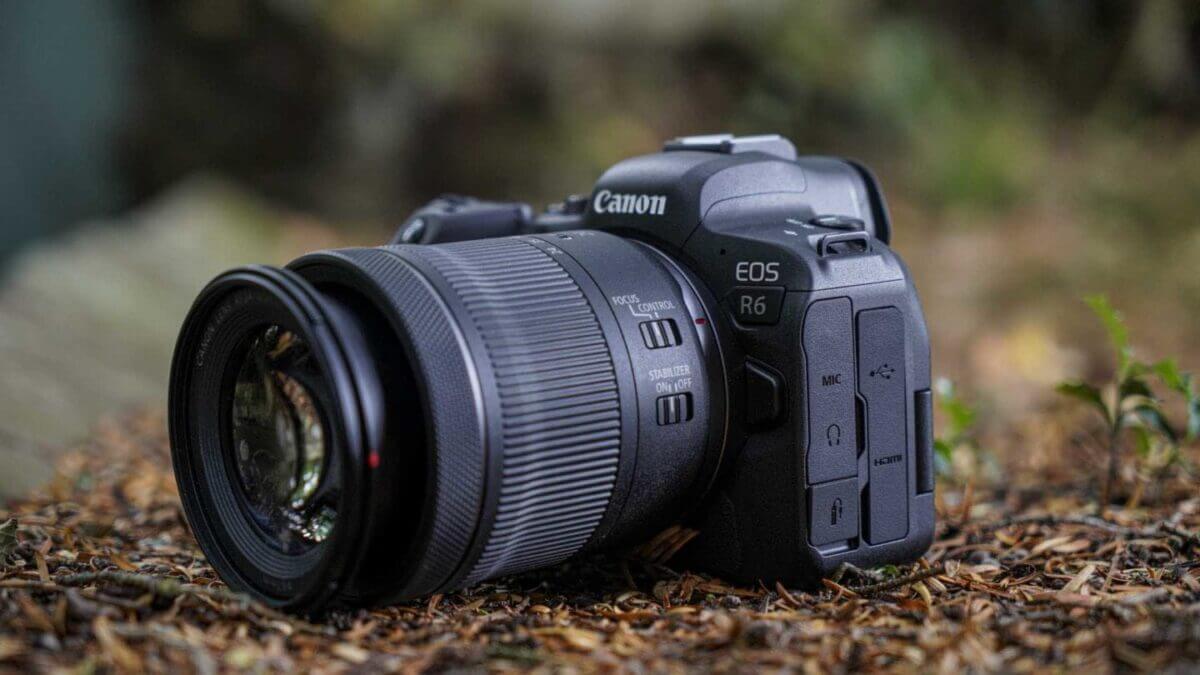
Specification
- Camera Type: Mirrorless
- Announced: 9th July 2020
- Sensor: 20Mp Full-frame Dual Pixel CMOS AF II
- Processor: Digic X
- Lens mount: RF
- Sensitivity range: Stills: ISO 100-102,400 expandable to ISO 50-204,800, Movies: ISO 100-6,400, expandable to ISO 204,800
- File formats: Raw + Jpeg/HEIF, MP4
- Maximum continuous shooting rate: Mechanical shutter: 12fps, Electronic shutter: 20fps
- Maximum video resolution: 4K video at up to 60fps, Full HD at up to 120fps. 4K video crop: 1.07x at 25p (1.19x with the Digital IS on), 1.52x at 60p
- Autofocus system: Dual Pixel CMOS AF II phase detection with 6,072 points in stills and 4968 points in movie mode
- Viewfinder: 0.5-inch 3.69million-dot OLED electronic viewfinder with 120fps refresh rate
- Screen: 3-inch 1.62-million dot vari-angle touchscreen
- Autofocus: Dual Pixel CMOS AF II with Advanced Animal AF (recognising dogs, cats and birds) supported in all video modes with 100% coverage and up to 1053 'AF segments'
- Stabilisation: In-body image stabilisation (IBIS) that works with lens IS and enables up to 8-stops of shutter speed compensation
- Storage: Dual slots, 2x SDXC UHS-II
- Dimensions: 138.4 x 97.5 x 88.4mm
- Weight: 598g / 680 g with card and battery
The Canon R6 inherits similar low-light capability to the EOS-1D X Mark III. Consequently, it has a native sensitivity range of ISO 100-102,400. If that’s not enough, the expansion settings take it to ISO 50-204,800. Meanwhile, if you’re shooting video there’s a native range of ISO 100-6,400, which is expandable to ISO 204,800.
This is matched by the Canon R6’s low-light focusing credentials. While the R5’s AF system is claimed to be sensitive down to -6EV, the R6’s AF system can function at down to -6.5EV. That’s incredibly low light and a new record for a Canon EOS camera.
Shooting in dim conditions can also necessitate slow shutter speeds, but that’s OK because the Canon R6 has 5-axis in-body image stabilisation built-in. This works in harmony with the stabilisation in Canon’s IS lenses (except the RF 600MM F11 IS STM or RF 800MM F11 IS STM) and is claimed to offer up to 8 stops of shutter speed compensation. That’s a new high for the photographic industry.
Some photographers may be a little disappointed that the R6 has a 20Mp chip rather than a 24, 26 or 30Mp sensor, but keeping the pixel count down helps enable better noise control.
We found that the EOS-1D X Mark III controls noise very well up to ISO 51,200. Our tests revealed that the same is true of the Canon R6. That gives plenty of scope for shooting in music venues and at evening sports events.
Push up beyond ISO 51,200 and the results remain impressive with the top native setting of ISO 102,400 producing some of the best images we’ve ever seen at that value.
£2500
€2899.99For
- Similar 20Mp full-frame sensor to the Canon EOS 1D X Mark III
- 12fps/20fps continuous shooting
- Superb autofocus system
Nikon Z6 II
Specification
- Camera type: Full-frame mirrorless camera
- Announced: 14th October 2020
- Lens mount: Nikon Z
- Sensor: Full-frame (FX 35.9 x 23.9mm) 24.5MP backside illuminated (BSI) sensor
- Processing engine: Dual Expeed 6
- Stabilisation: 5-axis in-body VR
- Sensitivity: ISO 100-51,200, expandable to ISO 50-204,800
- Maximum continuous shooting rate: 14fps for up to 200Jpegs or 124 12-bit uncompressed raw files
- Autofocus system: Hybrid with phase and contrast detection
- Phase detection points: 273
- Video resolution: 4K (3840 x 2160) 30/25/24p (60P to come with free firmware update in Feb 2021), Full-HD (1920 x 1080) 120/100/60/50/30/25/24p, Slow-motion mode 1920 x 1080 30p x4/25p x4/24p x5
- Viewfinder: 0.5-inch 3.69-million-dot electronic viewfinder
- Screen: 3.2-inch 2,100,000-dot tilting touch-screen
- Storage: Dual slot 1 XQD/CFexpress and 1 SD/SDHC/SDXC
- Dimensions (W x H x D): 134 x 100.5 x 69.5mm / 5.3 x 4 x 2.8-inches
- Weight: 705g with battery and memory card but without body cap, 615g body only
While it may boast the same 273-point hybrid focusing system as the original Nikon Z6 that uses phase and contrast detection, with points covering 90% of the sensor. However, the tracking and low-light AF performance has been improved. In fact, Nikon claims that the Z6II can focus down to -6EV with an f/2 or faster lens. That’s roughly equivalent to the light cast by a quarter of the moon.
As the all-rounder of the two cameras, the Z6 II has a lower resolution than the Z7 II, which means each pixel gathers more light. As well as benefiting image quality, this plays a part in the autofocus performance.
While some photographers may wish for the 45-million-pixel count of the Z7II, it’s worth remembering that the Z6II images are 6048 x 4024 pixels. That means that at 300ppi they are 51.2 x 34cm or 20.2×13.4inches in size. That’s plenty big enough for most photographers.
The Z6 II also controls noise is very well. Even images shot at ISO 3200 only have a suggestion of noise when they’re viewed at 100% on-screen.
£1999
€2262For
- High-quality sensor
- Excellent user interface and control layout
- Weatherproof build
Sony A7 III
Specification
- Announced: 26th February 2018
- Camera type: Full-frame mirrorless
- Sensor: 24.2Mp Full frame (35.6×23.8mm), Exmor R CMOS sensor
- Processor: Bionz X
- Lens mount: Sony E
- Sensitivity range: Stills: ISO 100-51,200, expandable to 50-204,800, Video: ISO 100-51,200, expandable to 100-102,400
- Maximum continuous shooting rate: 10fps with full AF and metering
- Maximum video resolution: 4K (3840 x 2160)
- Autofocus system: Hybrid with 693 phase detection points and 425 contrast detection points
- Viewfinder: 0.5-inch OLED with 2,359,296 dots
- Screen: 3-inch 921,600-dot tilting touchscreen
- Storage: Dual Slot, Slot 1: SD (UHS-I/II), Slot 2: Multi slot for Memory Stick Duo/SD (UHS-I)
- Dimensions (W x H x D): 126.9 x 95.6 x 73.7mm
- Weight: 650g
With the A7 III Sony stuck with the 24-megapixel sensor. Although the sensor is backside-illuminated (BSI), it’s not the same sensor as is in the A9. However, there is a front-end LSI which Sony says doubles the readout speed from the A7 III’s sensor.
According to Sony, this results in the focusing in low light being almost twice the speed of the A7 II’s. What’s more, the focus tracking is twice as fast.
The sensor and processing engine enable an overall sensitivity range of ISO 50-204,800. This helps the A7 III perform extremely well in low light. In fact, Sony is claiming a 1.5EV improvement in image quality overall vs the A7 II.
Sony’s 5-axis optical in-body image stabilisation is also on hand. It’s claimed to give a 5EV extension in the hand-holdable shutter speed.
In our tests, we found its low light autofocusing wasn’t quite as good as the Nikon D850, but it’s still exceptionally good (and half the price). Angela, who reviewed the A7 III, was able to photograph a pair of dancers in a dimly lit room filled with smoke and the low contrast didn’t cause much at all in the way of problems.
As for noise, even images captured at ISO 51,200 look good. The jpegs have a slight texture visible at 100% and show some signs of noise reduction, but they’re not objectionable. The raw files give you the option to avoid this noise reduction so you can have slightly more textured images with more detail.
The Sony A7 III also has an impressively wide dynamic range that enables it to capture images that look natural. It also means its raw files have excellent latitude. You won’t find the highlights burning out quickly and the shadows can be brightened post-capture if necessary. In some instances, it’s possible to brighten the 14-bit raw files by as much as 5EV.
£1699
$1999For
- Good-quality 24Mp full-frame sensor
- Excellent autofocus system
- Attractively priced in the full-frame market
Olympus OM-D E-M1X
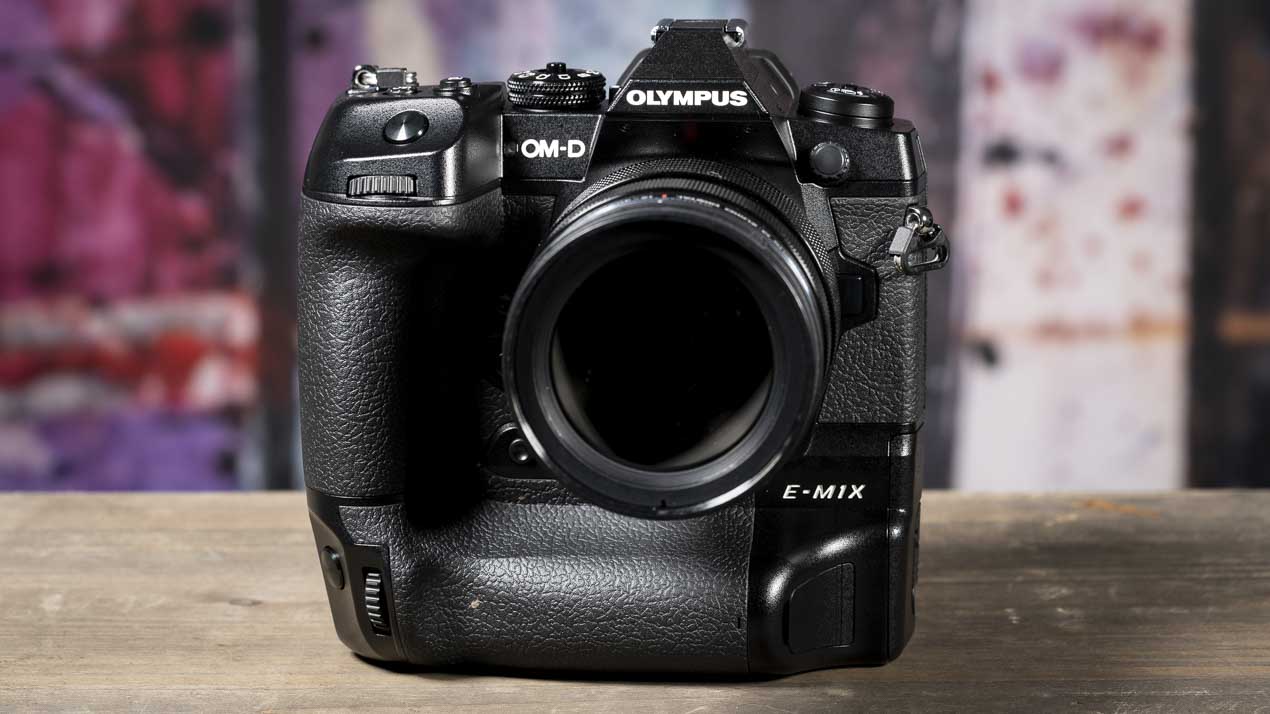
Specification
- Camera type: Mirrorless
- Sensor: 20.4Mp Four Thirds Type (17.3 x 13.0mm) CMOS
- Lens mount: Micro Four Thirds
- Sensitivity range: ISO 64-25,600
- Processing engine: 2x TruePic VIII
- Autofocus system: Hybrid with 121 cross-type points (800 in magnified view)
- Max continuous shooting rate: 18fps with AF tracking, 60fps with AF locked on first frame with electronic shutter
- Pro Capture High Mode: 60fps
- Pro Capture Low Mode: 18fps
- Burst Mode in S-AF: 15fps for 143 raw files
- Burst Mode in C-AF: 10fps for 283 raw files
- Max video resolution: 4K (4096 x 2160) at 24p
- Viewfinder: Electronic with 2,360,000 dots
- Screen: Touch-sensitive vari-angle 3-inch LCD with 1,037,000 dots
- Storage: 2x SD/SDHC/SDXC (UHS-II)
- Dimensions (WxHxD): 144.4 x 146.8 x 75.4mm
- Weight: 849g (body only), 997g (including 2 batteries and memory cards)
The OM-D E-M1 II has a very good autofocus (AF) system, but Olympus has redeveloped it for the OM-D E-M1X. As before, the imaging sensor has 121 cross-type phase detection AF points but the AF algorithm has been re-worked to boost performance. This also enables the E-M1X to use AF information from recorded images to aid tracking subjects that move unpredictably.
In addition, there’s a selection of new AF settings on the OM-D E-M1X. These include a 25-point target mode and custom AF area settings. Most exciting, however, is the new intelligent subject detection mode. This allows you to set the camera to detect specific subjects automatically.
Further good news is that the AF point can be selected using a mini-joystick multi-selector control on the back of the camera. There are two of these controls so there’s one in easy reach whether you’re using the horizontal or vertical grip.
Olympus has also boosted the AF system’s sensitivity and it’s claimed to operate at -6EV.
In our tests, we found that the E-M1X provides incredibly good AF in low light, with superb image quality.
£2199
$1999For
- One of the fastest cameras you can buy
- Pro Capture Mode offers lots of flexibility
- High Res Shot mode is very impressive
Olympus OM-D E-M1 Mark III
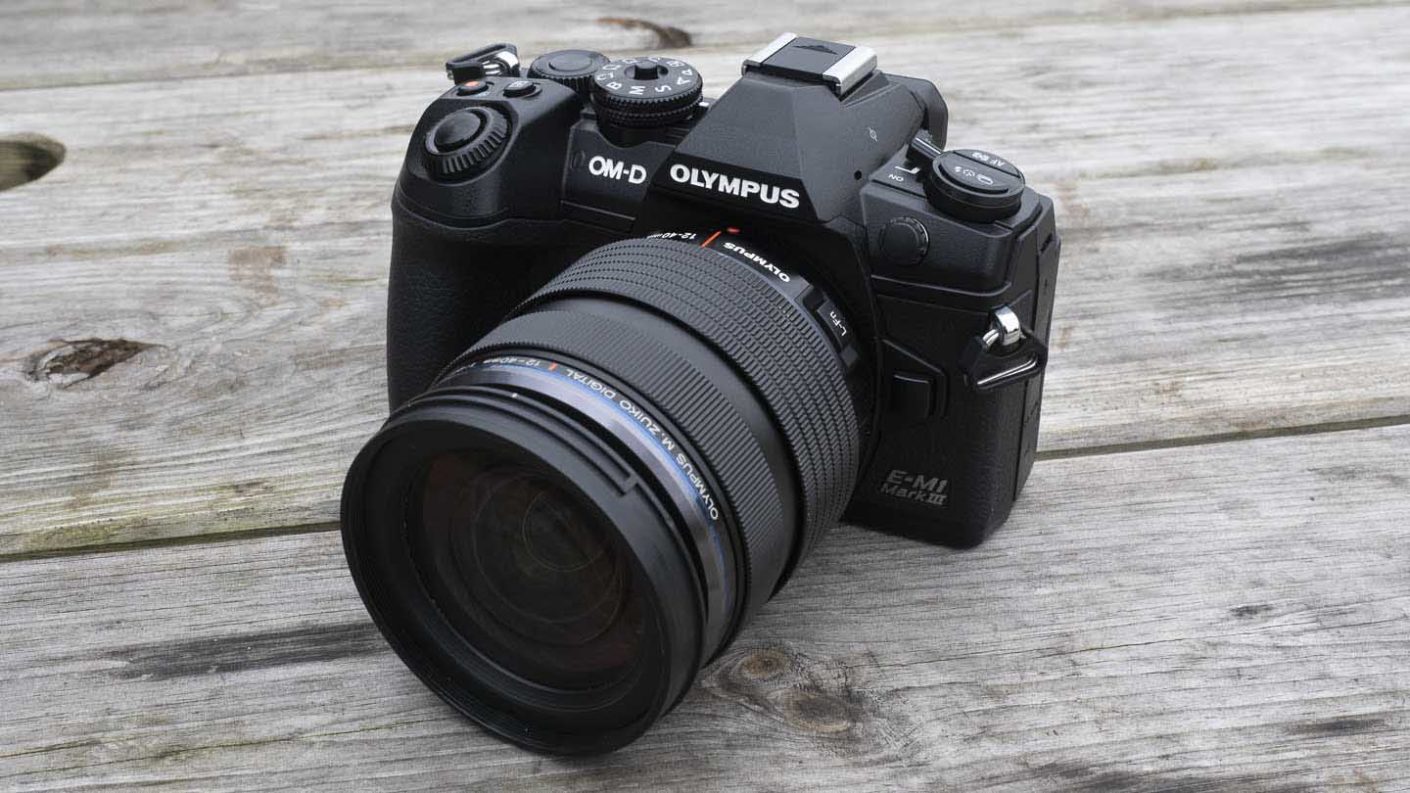
Specification
- Camera type: Mirrorless
- Lens mount: Micro Four Thirds
- Sensor: Four Thirds type 20.4 MP Live MOS sensor
- Announced: 12th February 2020
- Processing engine: TruePic IX
- Autofocus system: Hybrid with 121-point all cross-type focus points
- Max continuous shooting rate: 18fps AF/AE mechanical shutter (C-AF), 60fps in electronic shutter (S-AF)
- Max video resolution: C4K (4096 x 2160) at 30/25p
- Viewfinder: 2,360,000-dot electronic viewfinder
- Sensitivity range: ISO 64-25,600
- Screen: Vari‑angle 3-inch 1,037,000-dot touchscreen
- Storage: 2x SD/SDHC/SDXC (1 UHS-I and 1 UHS-II)
- Dimensions (LxHxW): 134.1 x 90.9 x 68.9mm
- Weight: 504g body only, 580g with battery and SD card
Olympus’s image stabilisation (IS) is excellent and it’s been upgraded for the E-M1 Mark III to enable up to 7.5Ev of shutter speed compensation across 5 axis with a stabilised lens. Even without a stabilised lens it’s said to enable up to 7Ev compensation. This has been achieved by using the same gyro as is in the E-M1X.
It’s the sensor-shifting power of the in-body image stabilisation system (IBIS) that enables the OM-D E-M1 III’s High Res Shot mode. The good news here is that in addition to the 80Mp Tripod High Res Shot mode, there’s also a 50Mp HandHeld version.
Thanks to Olympus’s Image Stabilisation system it’s possible to capture sharp handheld images with the E-M1 III at shutter speeds measured in whole seconds. That means you can shoot in very low light without needing to put the camera on a tripod.
£1600
$1499For
- Compact size with vari-angle screen
- Great feature set
- Excellent lens range
Best cameras for low light video
Many of the same issues that plague photographers shooting in low light also apply to video. However, noise is even more troublesome in video because it moves around, making it more noticeable.
The best cameras for low light videography are those with larger sensors, such as the Nikon Z6 II or Panasonic Lumix S5. These are better options than cameras with Micro Four Thirds or APS-C sensors with the same resolution, but the Sony A7S III and Panasonic Lumix S1H are particularly good.
Sony A7S III
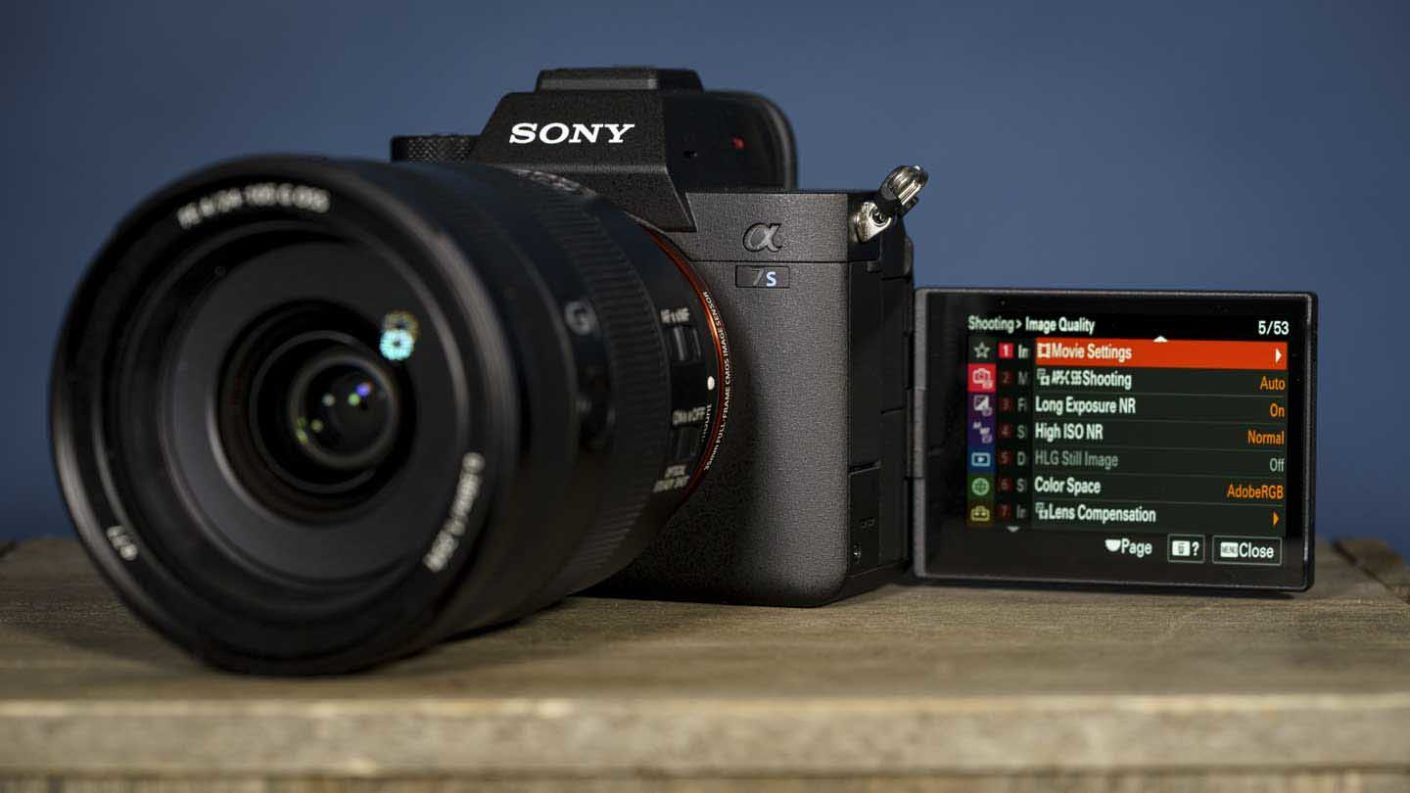
Specification
- Camera type: Full-frame mirrorless
- Announced: 28th July 2020
- Sensor: Full-frame 12.1Mp BSI CMOS
- Processing engine: Bionz XR
- Sensitivity: Video: ISO 80-102,400 expandable ISO 40-409,600. ISO base in S-Log is ISO 640 but it can be expanded down to ISO 160. Stills: ISO 80-102,400 expandable 40-409,600
- Autofocus system: Hybrid with 759 phase detection points and 425 contrast detection points, Real Time Eye AF (Human and Animal for stills, Human for video)
- Stabilisation: 5-axis IBIS and digital, up to 5.5EV shutter speed compensation
- Video resolution: 4K at up 120fps and 1080p at 240fps, 10-bit and 4:2:2 colour, 16-bit raw video over HDMI
- Video file formats: XAVC S,XAVC HS
- Video compression: XAVC S: MPEG-4 AVC/H.264, XAVC HS: MPEG-H HEVC/H.265
- 4K Video details: XAVC HS 4K 3840 x 2160 (4:2:0, 10bit, NTSC): 120p (200Mbps), 60p (150Mbps / 75Mbps / 45Mbps), 24p (100Mbps / 50Mbps / 30Mbps); 3840 x 2160 (4:2:0, 10bit, PAL): 100p (200Mbps), 50p (150Mbps / 75Mbps / 45Mbps); 3840 x 2160 (4:2:2, 10bit, NTSC): 120p (280Mbps), 60p (200Mbps / 100Mbps), 24p (100Mbps / 50Mbps); 3840 x 2160 (4:2:2, 10bit, PAL): 100p (280Mbps), 50p (200Mbps / 100Mbps) XAVC S 4K 3840 x 2160 (4:2:0, 8bit, NTSC): 120p (200Mbps), 60p (150Mbps), 30p (100Mbps / 60Mbps), 24p (100Mbps / 60Mbps); 3840 x 2160 (4:2:0, 8bit, PAL): 100p (200Mbps), 50p (150Mbps), 25p (100Mbps / 60Mbps); 3840 x 2160 (4:2:2, 10bit, NTSC): 120p (280Mbps), 60p (200Mbps), 30p (140Mbps), 24p (100Mbps); 3840 x 2160 (4:2:2, 10bit, PAL): 100p (280Mbps), 50p (200Mbps), 25p (140Mbps) XAVC S-I 4K 3840 x 2160 (4:2:2, 10bit, NTSC) (Approx.): 60p (600Mbps), 30p (300Mbps), 24p (240Mbps); 3840 x 2160 (4:2:2, 10bit, PAL): 50p (500Mbps), 25p (250Mbps)
- Gamut: S-Log2 and S-Log3, S-Gamut3.Cine and S-Gamut3
- Slow and Quick (S&Q) mode options: NTSC: 1fps,2fps,4fps,8fps,15fps,30fps,60fps,120fps, 240fps4, PAL: 1fps,2fps,3fps,6fps,12fps,25fps,50fps,100fps, 200fps
- Still File formats: Raw, JPG, HEIF
- Screen: 3-inch 1,440,000-dot vari-angle touchscreen
- Viewfinder: 0.64-inch type 9,437,184-dot OLED electronic viewfinder, with refresh rate up to 120fps, adjustable magnification up to 0.9x
- Maximum continuous shooting rate: 10fps with mechanical or electronic shutter for up to 1000 uncompressed raw files when a CFexpress Type 1 card is used
- Storage: Dual: SD/SDHC/SDXC (UHS-II) and CFexpress Type A
- Dimensions (W x H x D): 128.9 x 96.9 x 80.8mm / 5 1/8 x 3 7/8 x 3 1/4 inches
- Weight: 699g / 1 lb 8.7 oz
Some videographers were probably hoping for a big jump in resolution from the 12Mp Sony A7S II. However, Sony already has the 61Mp A7R IV and the 24Mp A7 III, so sticking with 12Mp means that the A7S III has even better low-light capability than its predecessor but with a much better autofocus system, a vari-angle screen and the highest-resolution viewfinder around.
The A7S III is about more than grabbing the headlines for its resolution; it promises to make capturing 4K video easier than before and for that video quality to be the best 4K footage you can get from a Sony camera. It doesn’t disappoint as the quality of the footage is superb.
Although Sony has stuck with the same resolution as the A7S II, the 12.1Mp full-frame CMOS sensor inside the Sony A7S III is new and has backside-illuminated (BSI) structure. Using this design enables the photosites to receive more light than a standard CMOS sensor, which means its low-light performances is boosted.
£3800
€4200 / $3499For
- Large pixels for great low-light performance
- 4K full-pixel readout without binning and 10-bit depth 4:2:2 colour available in all recording formats
- Vari-angle touchscreen and class-leading electronic viewfinder
Panasonic S1H
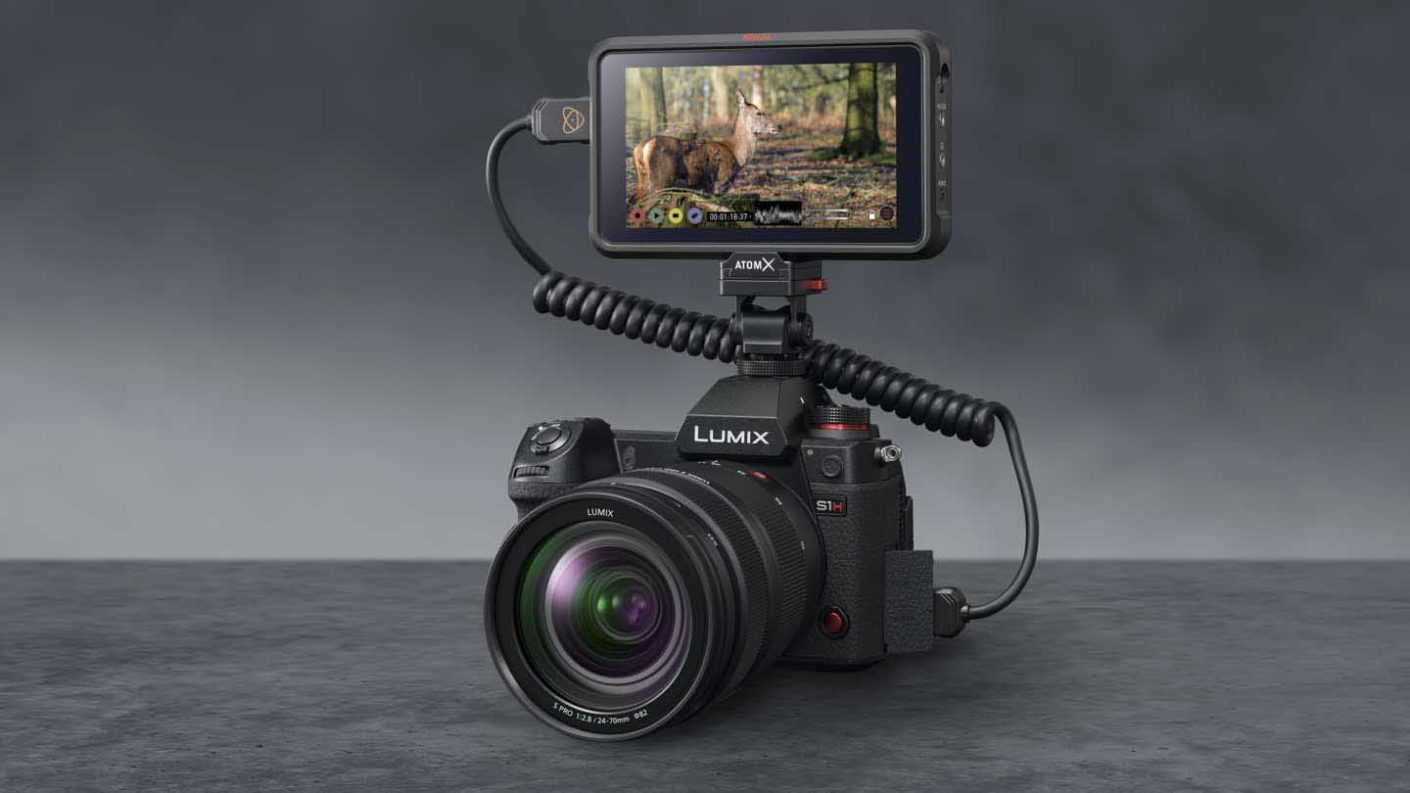
Specification
- Sensor: 24.2MP full frame CMOS
- Video: 6K (5.9K) 3:2 24p, 5.9K 16:9 up to 30p, C4K/4K UHD up to 60p
- Autofocus: 225-area DFD contrast AF
- ISO: Dual Native ISO; 100-51,200 (50-102,400 exp.)
In early 2020 Panasonic announced that via a strategic partnership with Atoms it had developed new firmware for the Lumix S1H that enables the camera to output a maximum 5.9K/29.97p RAW video data to the Atomos Ninja V.
Shortly after this announcement, the Panasonic S1H became the first ‘Netflix-approved’ camera on the market.
The S1H is aimed at serious filmmakers, but its price tag is under the the £4,000 threshold, and it packs some serious firepower.
Panasonic’s flagship full-frame mirrorless camera offers 6K video recording and 10-bit 60p 4K/C4K, aided by a 35.6 x 23.8mm, 24.2-megapixel full-frame CMOS sensor. It can record 6K at 24p at a 3:2 aspect ratio, 5.9K at 30p in 16:9, as well as 10-bit 4K/Cinema 4K footage at 60p using the Super 35mm image area.
As if that isn’t enough, it can record 4:2:2 10-bit 4K footage at 30p over the full image area.
The Panasonic S1H also delivers 14 stops of dynamic range – the same as Panasonic’s cinema cameras – along with a slew of other video specifications aimed at professionals such as Panasonic’s V-Log/V-Gamut log modes, HDR in HLG (Hybrid Log Gamma), 4:2:2 10-bit HDMI output and Anamorphic 4:3 modes.
For
- Shoots 6K raw
- Records 4K at 60p
- 14 stops dynamic range
Panasonic Lumix S5
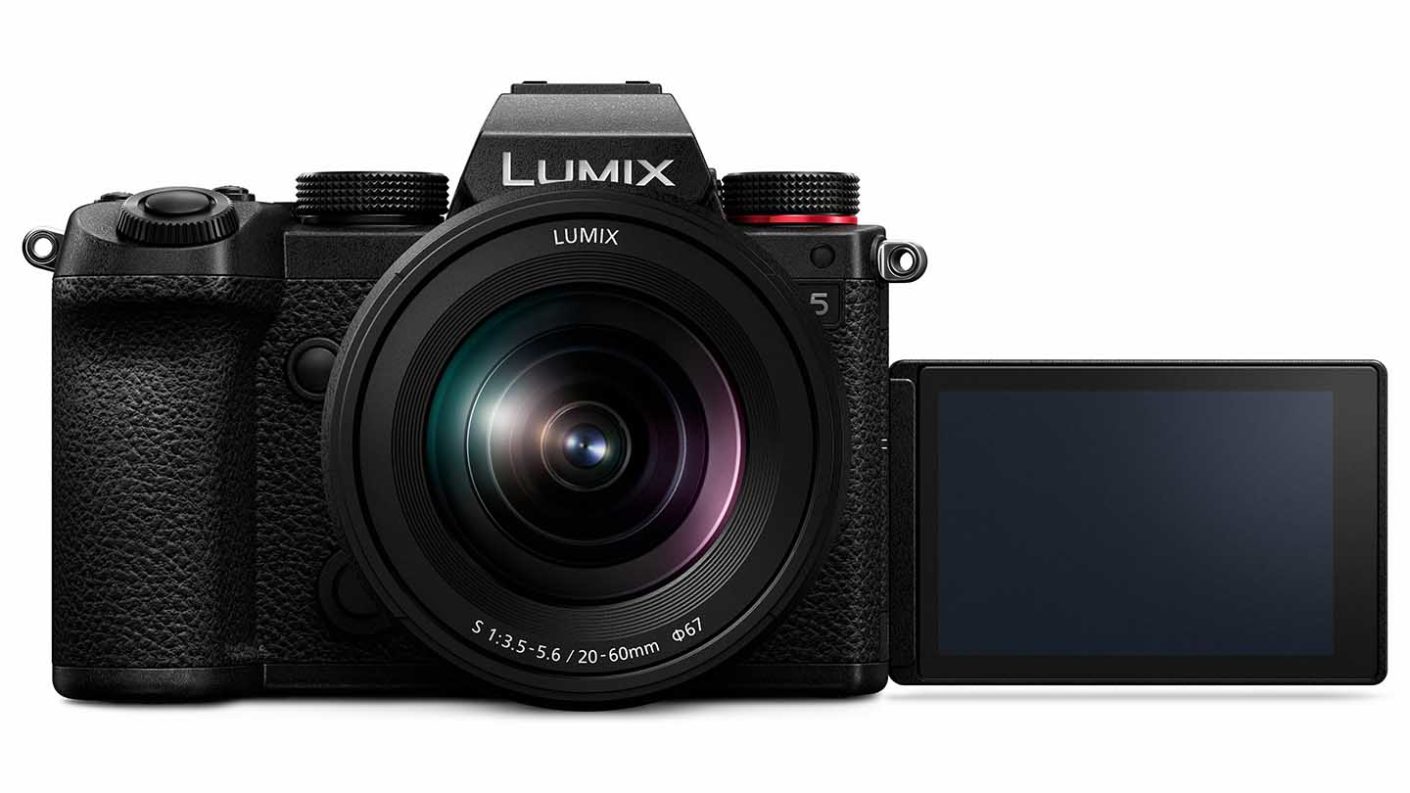
Specification
- Camera type: Mirrorless
- Announced: 2nd September 2020
- Sensor: 24.2Mp full-frame (35.6 x 23.8mm) CMOS sensor
- Lens mount: L
- Construction: Magnesium alloy with dust and splash resistant seals
- Stabilisation: 5 axis in-body IS to 5EV, 6.5 with Dual IS
- Screen: 3-inch 1,840,000-dot vari-angle touchscreen
- Viewfinder: 2,360,000-dot OLED electronic viewfinder with 0.74x magnification
- Key video specifications: 4K (3840x2160) 4:2:2 10-bit LongGOP H.264 29.97/23.98p/25p and 150Mbps for up to 30mins, 4K (3840x2160) 4:2:0 8-bit LongGOP H.264 29.97/23.98p/25p and 100Mbps unlimited, Full HD (1920x1080) 4:2:2 10-bit LongGOP H.264 59.94/29.97/23.98p/50/25p and 100Mbps unlimited
- Slow & Quick motion: Slow: 4K up to 60p in MP4, FHD up to 120p at full width or 180p with narrower angle of view, Quick: 4K to 1p
- Sensitivity: Dual native ISO 100, 6400, Range: ISO100-51,200, expandable to ISO 50-204,800. Dual-native ISO for video
- Shutter speed: 60-1/16,000sec, Bulb to 30mins
- Maximum continuous shooting rate: AF-S or manual focus: 7fps, AF-C: 5fps, 6K Photo 30fps, 4K Photo: 60fps
- Memory: Dual SD card slots, 1 UHS-II, 1 UHS-I
- Weight: 714g with memory card and battery
- Dimensions (WxHxD): 132.6x97.1x81.9mm
While the S1H is aimed at professional videographers and filmmakers, the S5 is designed at a wider market, those people looking to take video more seriously and create high-quality content. The small size and weight of the Panasonic S5, combined with its vari-angle screen should make it suitable for use when travelling as well as day-to-day shooting and vlogging.
There’s an excellent array of customisation options to enable you to set the camera to suit your style of shooting and results are very impressive.
In some respects, the Panasonic S5 appears to be the camera that many people were expecting when the development of the full-frame Lumix S1 and S1R was announced at Photokina in September 2018.
The S5 is aimed at people who have started out as photographers and content creators and who want to create more video. Its headline video specification is that it can shoot 4K (3840×2160) footage in 4:2:2 and 10-bit LongGOP H.264 at 29.97/23.98p/25p. That’s when recording internally to an SD-type card.
It can shoot at that quality and resolution for up to 30 minutes, but if you drop to 4:2:0 8-bit 4K footage, it can record indefinitely until the memory cards are full.
In summary, the Panasonic Lumix S5 is a very nice all-rounder that captures attractive stills and video.
£1799
$1998For
- Smaller than the MFT Lumix GH5
- Viewfinder and vari-angle touchscreen
- V-log pre-installed
Blackmagic Design Pocket Cinema Camera 6K Pro
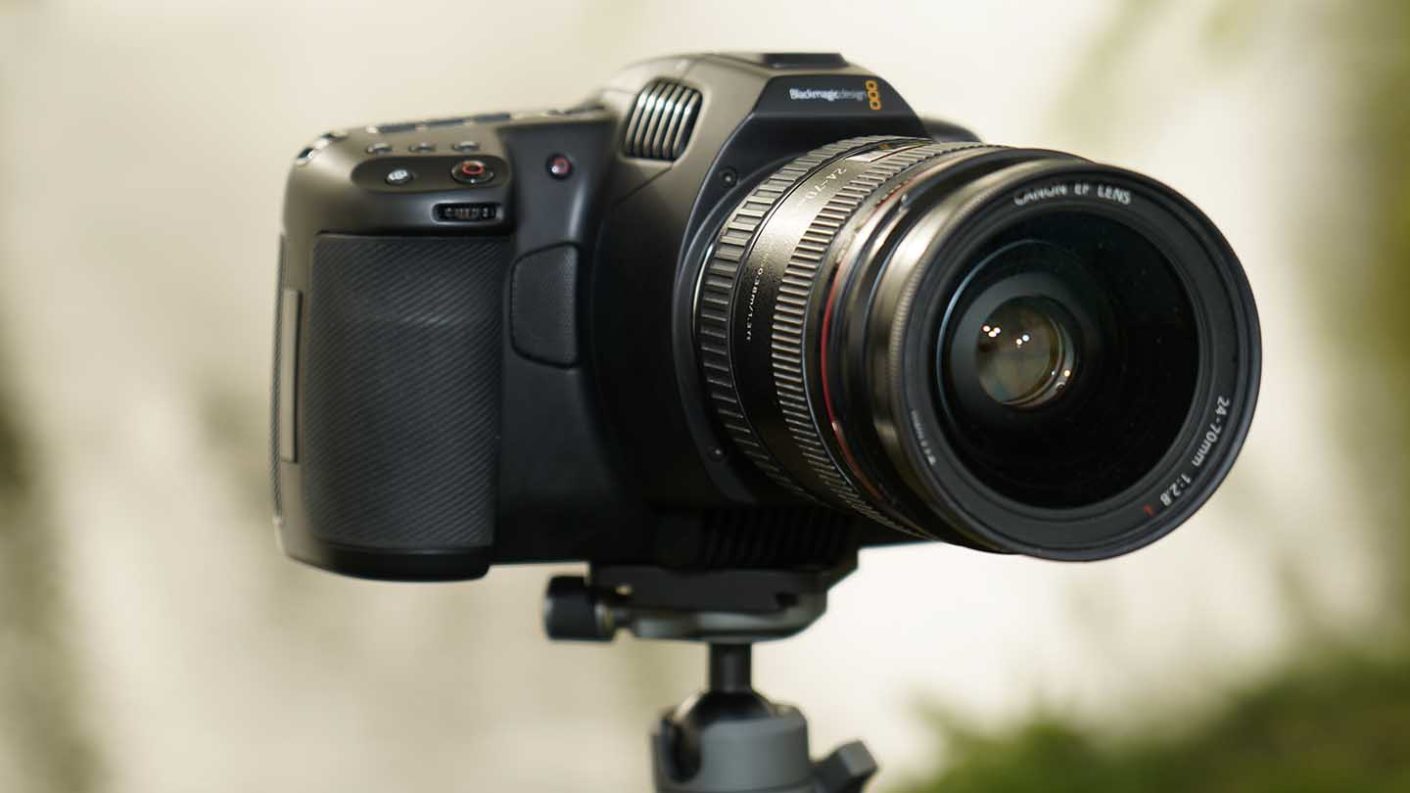
Specification
- Effective Sensor Size: 23.10mm x 12.99mm (Super 35)
- Lens Mount: Active EF mount.
- Lens Control: Iris, focus and zoom on supported lenses.
- Dynamic Range: 13 Stops
- Dual Native ISO: 400 and 3200
- Shooting Resolutions: 6144 x 3456 (6K) up to 50 fps, 6144 x 2560 (6K 2.4:1) up to 60 fps, 5744 x 3024 (5.7K 17:9) up to 60 fps, 4096 x 2160 (4K DCI) up to 60 fps, 3840 x 2160 (Ultra HD) up to 60 fps, 3728 x 3104 (3.7K 6:5 anamorphic) up to 60 fps, 2868 x 1512 (2.8K 17:9) up to 120 fps, 1920 x 1080 (HD) up to 120 fps
- Built in ND Filters: Four position ND filter with clear, 2‑stop, 4‑stop and 6‑stop IR ND filters.
- Focus: Auto focus available using compatible lenses.
- Screen Dimensions: 5-inch 1920 x 1080.
- Screen Brightness: 1500nits
- Total Video Outputs: 1 x HDMI up to 1080p60
- Analog Audio Inputs: 2 x mini XLR analog switchable between mic with phantom power support and line level (up to +14dBu). 1 x 3.5mm Stereo Input. Can also be used for Timecode input.
- Media: 1 x CFast card slot, 1 x SD UHS‑II card slot, 1 x USB-C 3.1 Gen 1 expansion port for external media for Blackmagic RAW and ProRes Recording.
The Pocket Cinema Camera’s small body gives you access to pro-level features, and although the sensor may be small, it’s still capable of producing high-quality footage full of tone and detail.
Using this camera in a variety of situations we were blown away by the visual quality of the footage. There are some quirks, such as only being able to shoot up to 4K in ProRes, but with Blackmagic RAW you soon learn to love the data format and realise that it isn’t too scary.
Blackmagic also improved the camera’s image processing with new generation 5 colour science, a Super 35 HDR image sensor with 13 stops of dynamic range and dual native ISO of 25,600.
Because it’s an advanced digital film camera, the sensor is designed to reduce thermal noise allowing cleaner shadows and higher ISO.
£1879
$2495For
- Packed with features
- Incredible quality video
- Unbelievable price

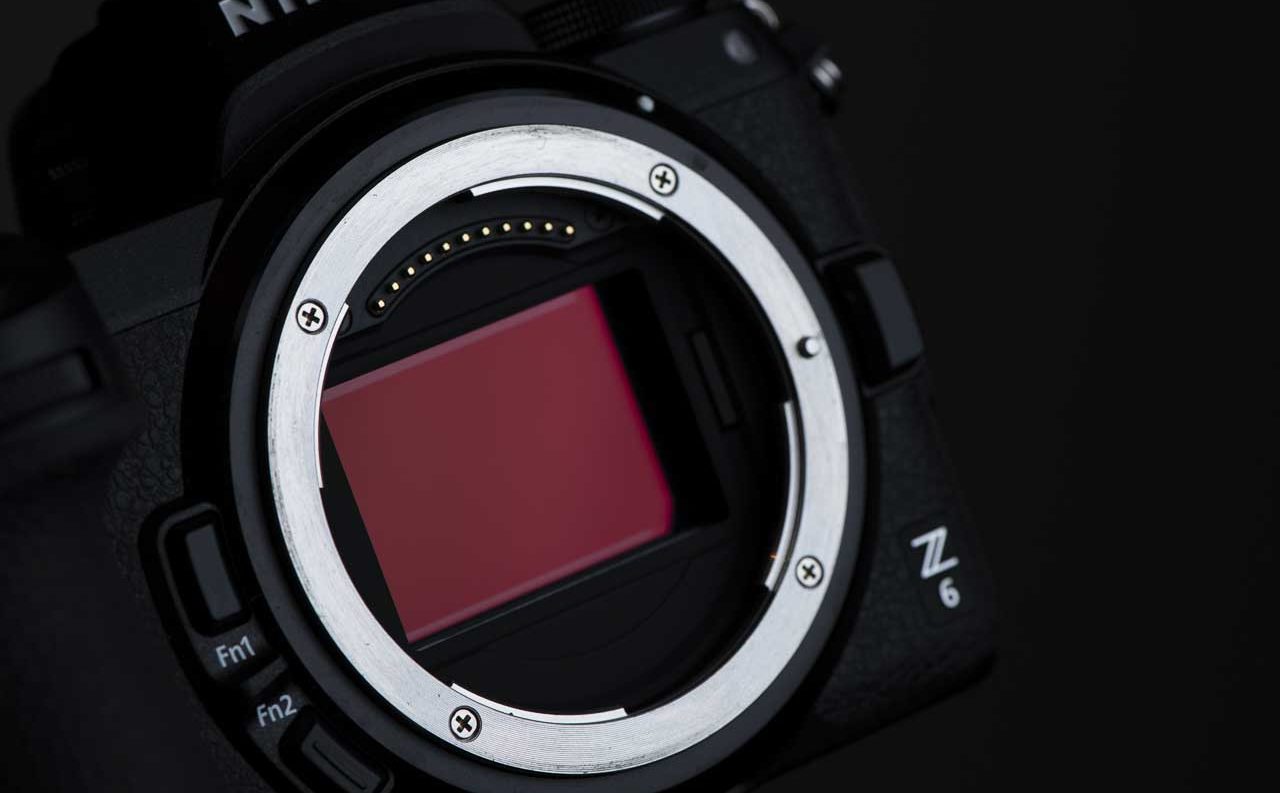



Leave a Reply
You must be logged in to post a comment.